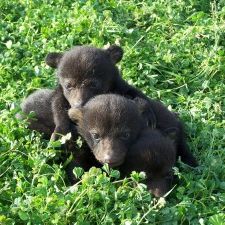
by Merri Collins
A small green beetle could be responsible for the destruction of all 7.5 billion ash trees throughout Canada and the U.S. It has already ravaged 100 million ash trees across 14 states and parts of Canada,…
Read more
by George Stevens
Coral reefs provide food to millions of people, unique chemicals for use in medicine, protect coastlines from erosion and storms, and are a major part of the thriving global tourism industry. In all, it…
Read more
by Kathryn Dixon
The Sahgha Tri-National Protected Area (TNS) bounds 10,000 square miles (25,000 square kilometers) of one of the most pristine regions of equatorial Africa, encompassing tropical forests, wetlands and…
Read more
by Merri Collins
The Florida black bear, a subspecies of the North American black bear, was removed from Florida’s Endangered Species List by the Florida Fish and Wildlife Conservation Commission on June 27th.
Read more
by Kathryn Dixon
Sri Lanka, an island located off the southern coast of India, has been called “The Pearl of the Indian Ocean” due to its rich culture, tropical forests, diverse landscapes and abundant biodiversity. The…
Read more
by Alexandre Manigault
Roads are omnipresent in most landscapes around the globe. Roads provide a high level of connectivity in a human engineered and industrialized environment, but there is a price to pay. Whatever land a…
Read more
by Merri Collins
A dramatic decrease in Canada’s sage grouse population reported this spring has led many to believe this prairie bird, listed as endangered in Canada since 1998, is facing extinction.
Read more
by George Stevens
Last Saturday, June 23, 2012, at the Sumatran Rhino Sanctuary in Way Kambas National Park, the female rhino Ratu gave birth to a baby male after a 16-month gestation period. The baby rhino was named Andatu,…
Read more
by Jessica Schmonsky
Research published earlier this year, detailing the effects of the popular herbicide atrazine on amphibians, reignited ongoing controversy over using chemicals to control our environment.
Read more
by Kathryn Dixon
Twenty young flightless rowi kiwis got the chance to fly this week, as part of intense conservation efforts by the BNZ Save The Kiwi Trust to preserve this rarest of kiwi birds.
Read more
by Michael Warren
A recent study published in the Proceedings of the National Academies of Science has made a clear connection between lead poisoning in California Condors and the lead found in hunting ammunition. An article…
Read more
by Merri Collins
The solitary and elusive Giant Pacific octopus, found in coastal waters of the North Pacific, holds the title of largest and longest-lived of the octopus species. The largest Pacific octopus on record…
Read more
